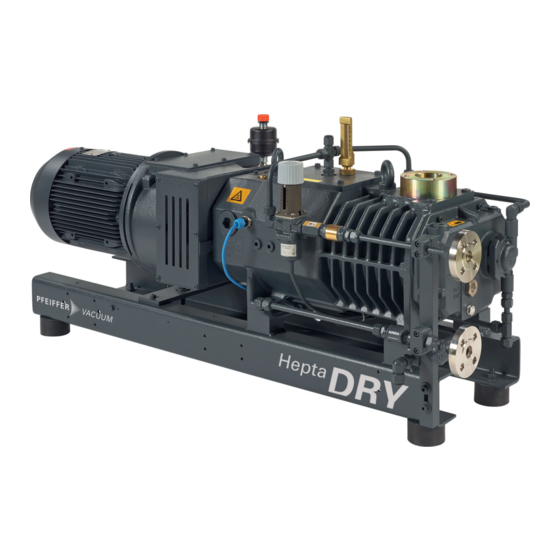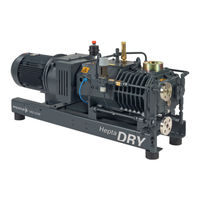
Pfeiffer Vacuum HEPTA 200 P Manuals
Manuals and User Guides for Pfeiffer Vacuum HEPTA 200 P. We have 3 Pfeiffer Vacuum HEPTA 200 P manuals available for free PDF download: Operating Instructions Manual
Pfeiffer Vacuum HEPTA 200 P Operating Instructions Manual (140 pages)
Screw pump
Brand: Pfeiffer Vacuum
|
Category: Water Pump
|
Size: 29 MB
Table of Contents
-
Deutsch
3-
Sicherheit10
-
Funktion16
-
Thermometer17
-
Gasballast17
-
Lieferumfang18
-
Transport19
-
Lagerung20
-
Installation21
-
Betrieb38
-
Wartung42
-
Störungen56
-
Zubehör60
-
Allgemeines61
-
Abmessungen64
-
English
71-
Conventions75
-
Target Group75
-
Validity75
-
Variants75
-
Pictographs76
-
Safety78
-
Proper Use82
-
Function84
-
Gas Ballast85
-
Thermometer85
-
Transport87
-
Bearing88
-
Installation89
-
Operation106
-
Maintenance109
-
Decommissioning120
-
Recommissioning120
-
Malfunctions123
-
Accessories127
-
Consumables127
-
General128
-
Technical Data128
-
Dimensions131
Advertisement
Pfeiffer Vacuum HEPTA 200 P Operating Instructions Manual (72 pages)
Screw pump
Brand: Pfeiffer Vacuum
|
Category: Water Pump
|
Size: 15 MB
Table of Contents
-
Validity7
-
Variants7
-
Safety10
-
Proper Use14
-
Function16
-
Thermometer17
-
Gas Ballast17
-
Transport19
-
Bearing20
-
Installation21
-
Operation38
-
Maintenance41
-
Malfunctions55
-
Accessories59
-
Consumables59
-
General60
-
Dimensions63
Pfeiffer Vacuum HEPTA 200 P Operating Instructions Manual (72 pages)
Screw pump
Brand: Pfeiffer Vacuum
|
Category: Water Pump
|
Size: 16 MB
Table of Contents
-
Validity7
-
Variants7
-
Safety10
-
Proper Use14
-
Function16
-
Thermometer17
-
Gas Ballast17
-
Transport19
-
Bearing20
-
Installation21
-
Operation38
-
Maintenance41
-
Malfunctions55
-
Accessories59
-
Consumables59
-
General60
-
Dimensions63
Advertisement


